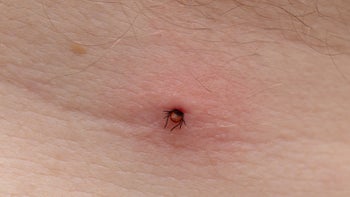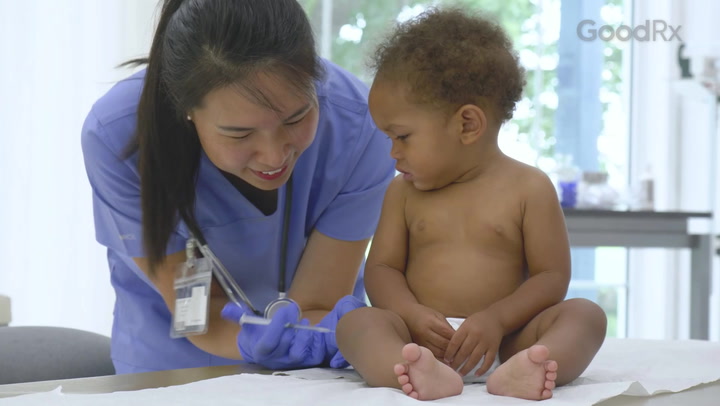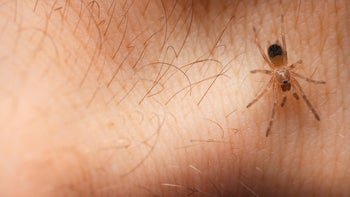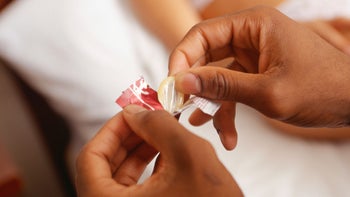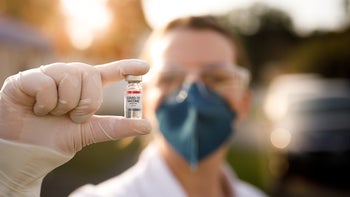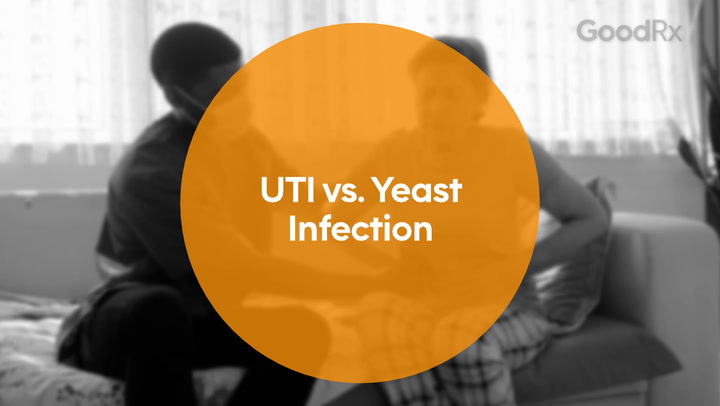
Wondering Why Your Kid Keeps Getting Strep Throat? What to Know About Recurrent Strep
Key takeaways:
Strep throat is caused by infection with streptococcus (group A Strep) bacteria. Frequent strep throat in a child may result from repeated exposure to group A Strep bacteria.
Recurring strep throat can also happen when strep throat is not completely treated with antibiotics.
To prevent recurrent strep throat, make sure that your child takes antibiotics as prescribed. You can help avoid reinfection with group A Strep bacteria by cleaning surfaces and encouraging frequent hand washing.

“My throat hurts!” is a common complaint in school-age kids. Usually, a viral infection is the culprit. But 20% to 30% of sore throats in school-age kids are because of strep throat. This is an infection with group A Streptococcus (group A Strep) bacteria.
Strep throat is treated with antibiotics. Kids usually feel better within 1 to 2 days after starting treatment. But in some cases, strep throat can come back after finishing antibiotics.
So, why do some kids seem to keep getting strep throat? Let’s look at why children may have frequent strep throat and how to stop recurrent strep throat from happening.
Can strep throat come back after treatment with antibiotics?
Yes.
The bacteria that causes strep throat constantly circulates, and you don’t become immune to group A Strep after having strep throat. So after kids finish antibiotics, they can encounter group A Strep bacteria and get an infection again. This is more likely to happen when children are together in crowded places, especially in the winter and early spring months.
Your child is likely to get strep throat several times during childhood or adolescence. Recurrent strep throat refers to group A Strep infections that happen back-to-back. Some experts consider recurrent strep throat to be a second group A Strep infection within 30 days of the initial infection.
Read more like this
Explore these related articles, suggested for readers like you.
What causes recurrent strep throat?
There are a few things that can lead to recurrent strep throat. Let’s look at common reasons why kids can keep getting strep throat.
Incomplete treatment
Medication doesn’t always taste great, and sometimes kids just don’t want to take it once they start to feel better. But if kids don’t complete their treatment, the group A Strep infection may not get completely cleared.
Most kids will feel better once they have been on antibiotics for about 2 days. Make sure your child completes the entire course of antibiotics as prescribed. This will help make sure the infection completely clears.
Re-exposure to strep from a close contact
Your child’s strep throat will clear with proper treatment. But kids are often in close quarters at school, daycares, and at home. This means someone else may have a group A Strep infection and spread it to your child again.
So, how do kids spread group A Strep to other kids?
The group A Strep bacteria sits in an infected person’s nose and throat. When people cough, sneeze, or talk, they spread group A Strep through tiny respiratory droplets. Kids pick up group A Strep bacteria by:
Breathing in an infected droplet
Touching an object with an infected droplet on it, then touching their mouth or nose
Sharing utensils, cups, or plates
Strep carriers
“Strep carriers” are people who are colonized with the group A Strep bacteria. This means the bacteria sits in their throat but it’s not causing them symptoms. Up to 20% of school-aged children may be strep carriers. And they can carry group A Strep for more than 6 months.
Luckily, strep carriers are less likely to spread group A Strep to others. They also rarely develop complications from group A Strep infections. Most of the time strep carriers don’t need treatment to get rid of the group A Strep bacteria.
Other factors
Some kids are more likely to get strep throat due to the genetics of their immune system.
One study looked at kids who had recurrent strep throat. It found several factors made them more likely to get the infection:
Smaller germinal centers: Germinal centers are areas inside lymph nodes where B cells mature. B cells are responsible for making antibodies that help the immune system identify and destroy harmful invaders.
Fewer B cells and follicular helper T cells: Like the name suggests, helper T cells help make active B cells. Kids prone to recurrent strep throat didn’t have as many of these cells as kids who didn’t have recurring infections.
Less production of antibodies: One way that group A Strep cause infection is by releasing an exotoxin. Children with recurrent strep throat had less antibodies against this toxin.
What should you do if your child keeps getting strep throat?
It can be frustrating to have to keep running to your child's pediatrician when they have a sore throat. Recurrent strep throat means more time out of school, greater exposure to antibiotics, and higher risk of developing complications from strep throat.
There are several things you can do to help prevent repeated strep throat:
Frequent hand washing: Good hand hygiene removes infected respiratory droplets from your child’s hands and can prevent them from getting strep throat.
Don’t share food or drinks: Avoid having them share drinks or snacks at home and school.
Throw away toothbrushes: A few days after your child starts treatment for strep throat, throw out their toothbrush. The old one may contain the group A Strep bacteria and cause another infection.
Finish antibiotics: Make sure your child is taking the correct dose of antibiotics for the entire course as prescribed.
You may wonder about surgery to remove the tonsils, called tonsillectomy. Since group A Strep can live on the tonsils, it makes sense that removing them would help prevent strep throat. But when experts looked at the evidence, they didn’t find a tonsillectomy was always beneficial.
A tonsillectomy is only recommended in a few situations:
When kids have more than seven strep throat infections in a year
For children with allergies to multiple antibiotics, which can make treating strep throat more difficult
If there’s an infection around the tonsils, called peritonsillar abscess
The bottom line
Strep throat is a common childhood illness. If your child is having repeat sore throats back-to-back, it may be due to recurrent strep throat. Often, frequent strep throat infections happen because kids are exposed to group A Strep bacteria again and again in crowded places like school and daycare. Or a strep throat infection may come back if kids don’t finish their course of antibiotics. The genetics of the immune system may also affect which kids keep getting strep throat. Help prevent recurring strep throat in children with good hand washing and encouraging them not to touch their mouth and nose. If your child has strep throat, make sure they take their antibiotics as prescribed.
Why trust our experts?



References
Centers for Disease Control and Prevention. (2022). Pathogen reduction and decolonization to prevent infections.
Centers for Disease Control and Prevention. (2022). Pharyngitis (strep throat).
Centers for Disease Control and Prevention. (2022). When and how to wash your hands.
Centers for Disease Control and Prevention. (2024). Strep throat: All you need to know.
Cunningham, A. (2019). Why some children may get strep throat more often than others. ScienceNews.
Dan, J. M., et al. (2019). Recurrent group A Streptococcus tonsillitis is an immunosusceptibility disease involving antibody deficiency and aberrant TFH cells. Science Translational Medicine.
Gupta, G., et al. (2023). Peritonsillar abscess. StatPearls.
Kalra, M. G., et al. (2016). Common questions about streptococcal pharyngitis. American Family Physician.
Mayo Clinic. (2022). Strep throat.
Mitchell, R. B., et al. (2019). Clinical practice guideline: Tonsillectomy in children (update) — executive summary. Otolaryngology–Head and Neck Surgery.
National Cancer Institute. (n.d.). Definition of B cell.
Nemours KidsHealth. (2023). Strep throat in kids and teens.
Nemours KidsHealth. (2024). Tonsillectomy.
ScienceDaily. (2019). Why your kid’s strep throat keeps coming back. La Jolla Institute for Immunology.
ScienceDirect. (n.d.). Search results for germinal center.
Shulman, S. T., et al. (2012). Clinical practice guideline for the diagnosis and management of group A streptococcal pharyngitis: 2012 update by the Infectious Diseases Society of America. Clinical Infectious Diseases.






